Abstract
Using oxygen uptake as an index of the physiological response of isolated parietal cells, the interactions between histamine and gastrin and between histamine and carbamylcholine and the effects of atropine and metiamide on these interactions have been studied. Parietal cells were isolated from canine fundic mucosa by sequential exposure of separated mucosa to collagenase and EDTA. In previous studies carbamylcholine, isobutyl methyl xanthine, gastrin, and histamine have each been shown to increase oxygen uptake by these cells. Isobutyl methyl xanthine greatly enhanced the histamine effect. Carbamylcholine was inhibited by atropine but not by metiamide, histamine was inhibited by metiamide but not by atropine, and gastrin was inhibited by neither, suggesting that each of these agents has a direct action on the parietal cell. In the present studies, potentiating interactions between histamine and carbamylcholine and between histamine and gastrin have been demonstrated. Against a histamine (0.1 and 1 μM) plus isobutyl methyl xanthine (0.1 mM) background, the dose for 50% response for gastrin was approximately 1 nM, and the maximal response was obtained at 0.1 μM. When added to these combinations of stimulants, metiamide and atropine retained their respective specificities against stimulation by histamine and carbamylcholine, in that responses were inhibited to the level that was seen when the component of the pair that was not inhibited was given alone.
The observation that histamine plus gastrin and histamine plus carbamylcholine produced maximal responses that were greater than the maximal response to histamine alone further supports the hypothesis that these agents each have direct actions on parietal cells. These observations are not consistent with the hypothesis that histamine is the sole mediator for the effects of other secretagogues. Furthermore, the inhibitory effects of atropine and metiamide on the specific cholinergic and histaminic components of the interactions that occur between secretagogues provide a possible explanation for the apparent lack of specificity of these agents on in vivo acid secretion.
Full text
PDF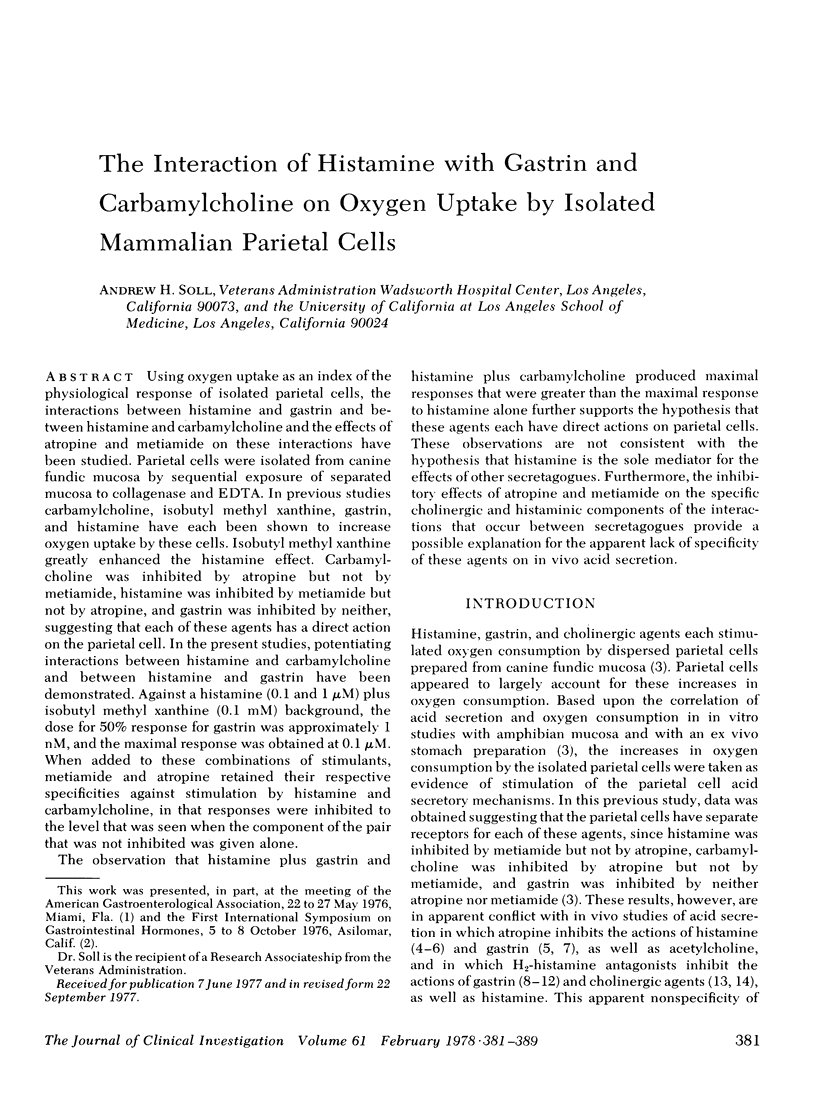
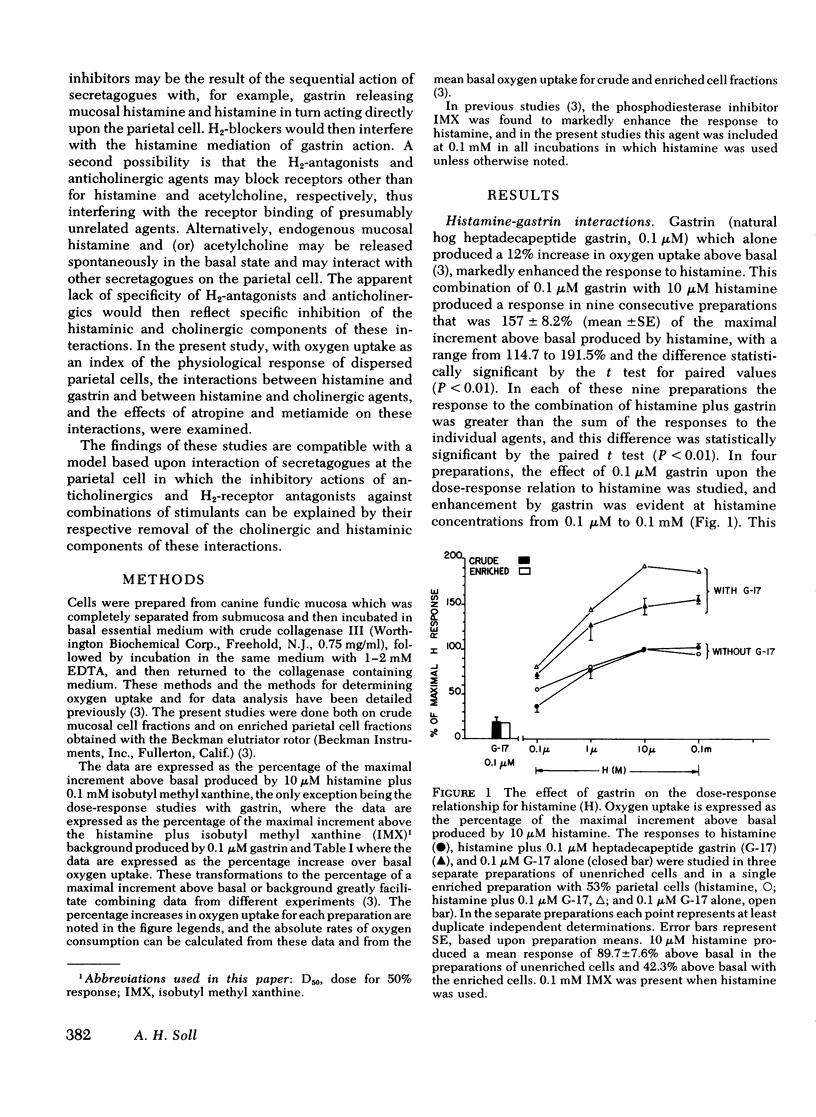
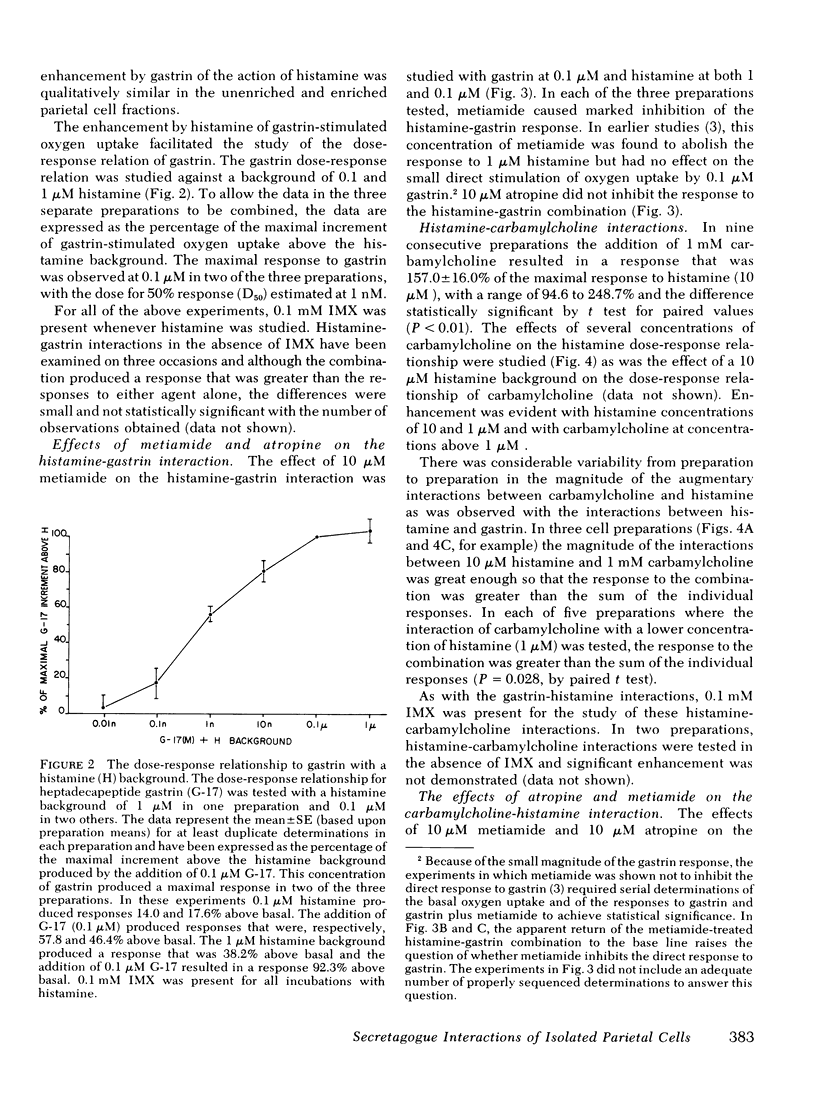
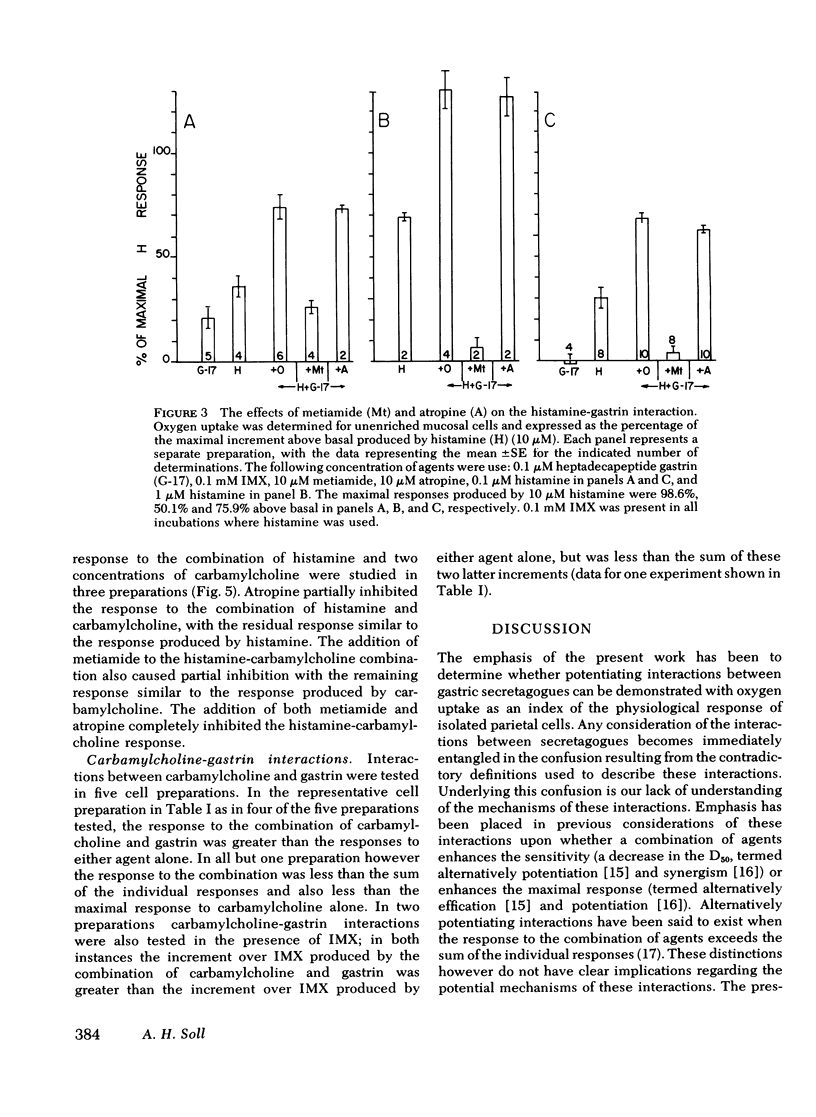
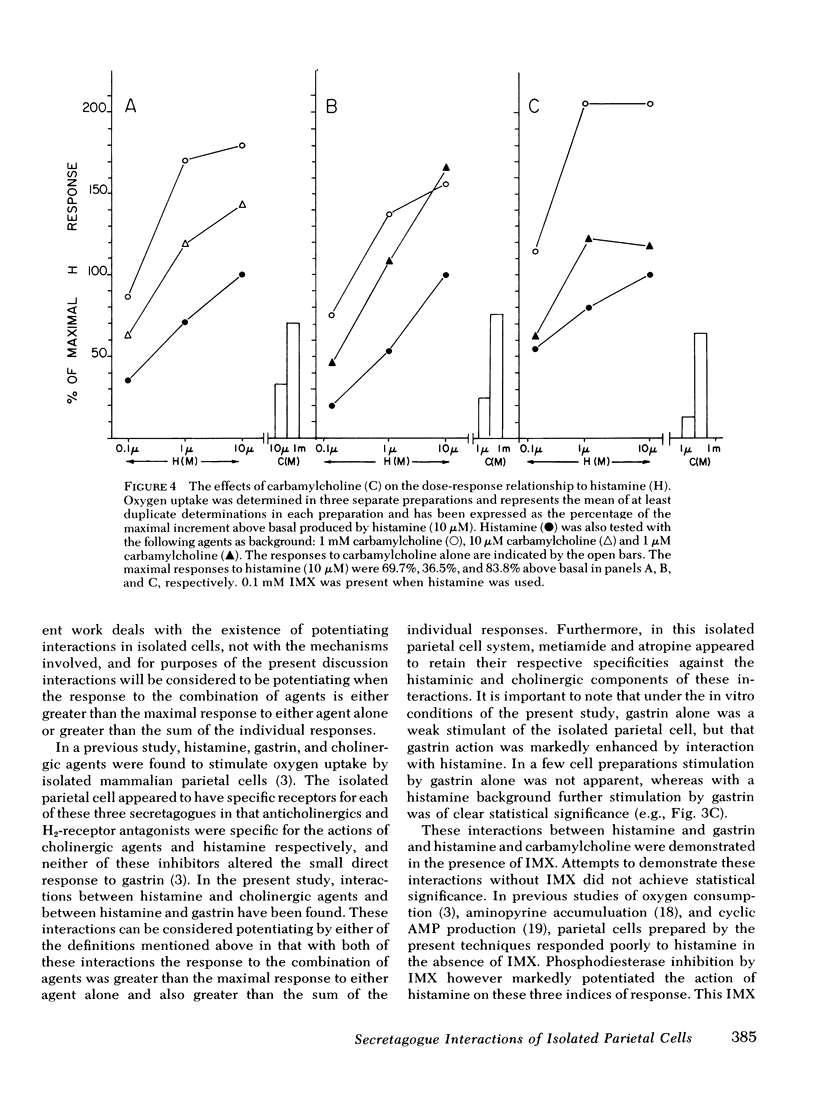
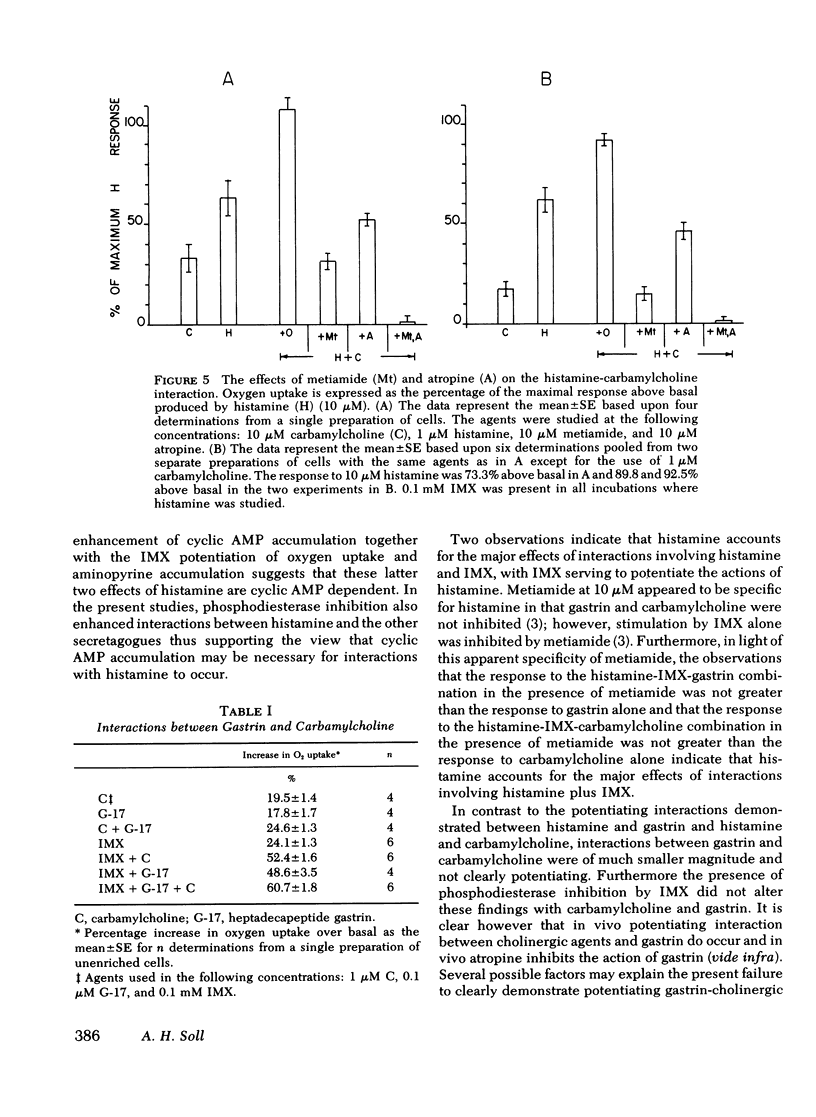
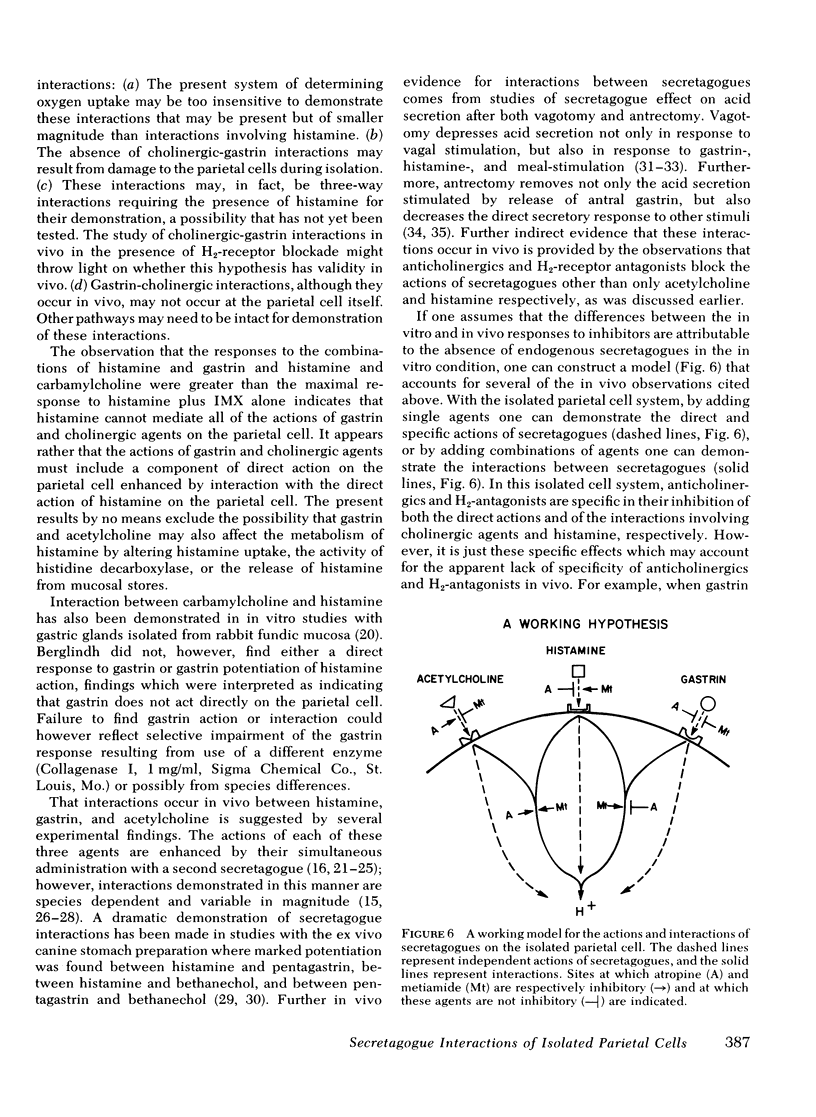
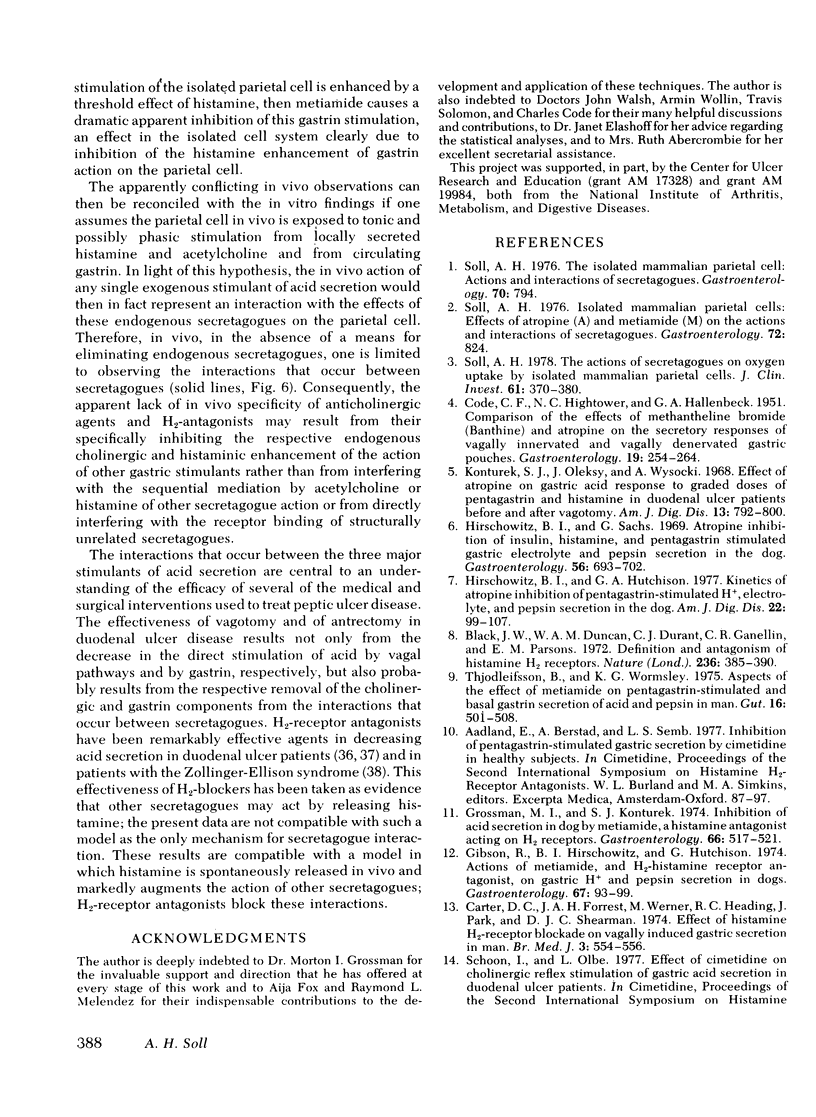
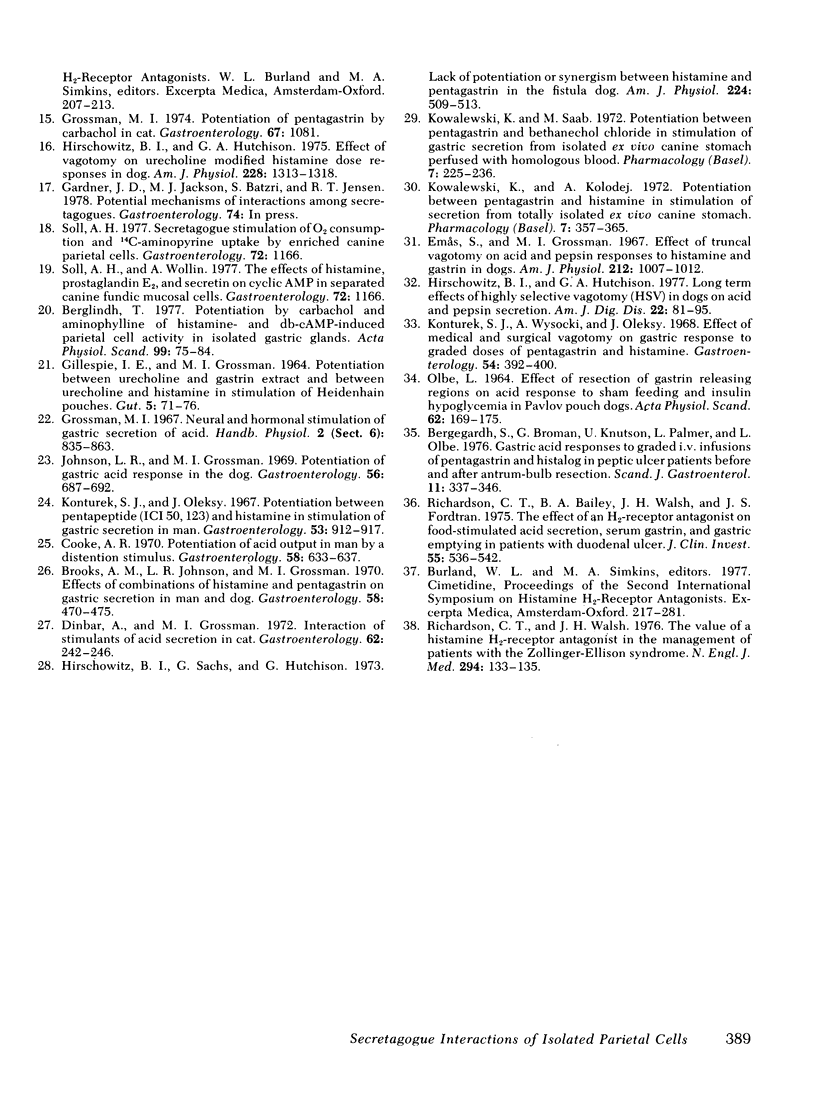
Selected References
These references are in PubMed. This may not be the complete list of references from this article.
- Bergegårdh S., Broman G., Knutson U., Palmer L., Olbe L. Gastric acid responses to graded i.v. infusion of pentagastrin and histalog in peptic ulcer patients before and after antrum-bulb resection. Scand J Gastroenterol. 1976;11(4):337–346. [PubMed] [Google Scholar]
- Berglindh T. Potentiation by carbachol and aminophylline of histamine- and db-cAMP-induced parietal cell activity in isolated gastric glands. Acta Physiol Scand. 1977 Jan;99(1):75–84. doi: 10.1111/j.1748-1716.1977.tb10354.x. [DOI] [PubMed] [Google Scholar]
- Black J. W., Duncan W. A., Durant C. J., Ganellin C. R., Parsons E. M. Definition and antagonism of histamine H 2 -receptors. Nature. 1972 Apr 21;236(5347):385–390. doi: 10.1038/236385a0. [DOI] [PubMed] [Google Scholar]
- Brooks A. M., Johnson L. R., Grossman M. I. Effect of combinations of histamine and pentagastric on gastric-secretion in man and dog. Gastroenterology. 1970 Apr;58(4):470–475. [PubMed] [Google Scholar]
- CODE C. F., HIGHTOWER N. C., Jr, HALLENBECK G. A. Comparison of the effects of methantheline bromide (banthine) and atropine on the secretory responses of vagally innervated and vagally denervated gastric pouches. Gastroenterology. 1951 Oct;19(2):254–264. [PubMed] [Google Scholar]
- Carter D. C., Forrest J. A., Werner M., Heading R. C., Park J., Shearman D. J. Effect of histamine H2-receptor blockade on vagally induced gastric secretion in man. Br Med J. 1974 Aug 31;3(5930):554–556. doi: 10.1136/bmj.3.5930.554. [DOI] [PMC free article] [PubMed] [Google Scholar]
- Cooke A. R. Potentiation of acid output in man by a distention stimulus. Gastroenterology. 1970 May;58(5):633–637. [PubMed] [Google Scholar]
- Dinbar A., Grossman M. I. Interaction of stimulants of acid secretion in cat. Gastroenterology. 1972 Feb;62(2):242–246. [PubMed] [Google Scholar]
- Emås S., Grossman M. I. Effect of truncal vagotomy on acid and pepsin responses to histamine and gastrin in dogs. Am J Physiol. 1967 May;212(5):1007–1012. doi: 10.1152/ajplegacy.1967.212.5.1007. [DOI] [PubMed] [Google Scholar]
- GILLESPIE I. E., GROSSMAN M. I. POTENTIATION BETWEEN URECHOLINE AND GASTRIN EXTRACT AND BETWEEN URECHOLINE AND HISTAMINE IN THE STIMULATIONS OF HEIDENHAIN POUCHES. Gut. 1964 Feb;5:71–76. doi: 10.1136/gut.5.1.71. [DOI] [PMC free article] [PubMed] [Google Scholar]
- Gibson R., Hirschowitz B. I., Hutchison G. Actions of metiamide, an H2-histamine receptor antagonist, on gastric H+ and pepsin secretion in dogs. Gastroenterology. 1974 Jul;67(1):93–99. [PubMed] [Google Scholar]
- Grossman M. I., Konturek S. J. Inhibition of acid secretion in dog by metiamide, a histamine antagonist acting on H2 receptors. Gastroenterology. 1974 Apr;66(4):517–521. [PubMed] [Google Scholar]
- Grossman M. I. Letter: Potentiation of pentagastrin by carbachol in cat. Gastroenterology. 1974 Nov;67(5):1081–1082. [PubMed] [Google Scholar]
- Hirschowitz B. I., Hutchison G. A. Effects of vagotomy on urecholine-modified histamine dose responses in dogs. Am J Physiol. 1975 May;228(5):1313–1318. doi: 10.1152/ajplegacy.1975.228.5.1313. [DOI] [PubMed] [Google Scholar]
- Hirschowitz B. I., Hutchison G. A. Kinetics of atropine inhibition of pentagastrin-stimulated H+, electrolyte, and pepsin secretion in the dog. Am J Dig Dis. 1977 Feb;22(2):99–107. doi: 10.1007/BF01072950. [DOI] [PubMed] [Google Scholar]
- Hirschowitz B. I., Hutchison G. A. Long-term effects of highly selective vagotomy (HSV) in dogs on acid and pepsin secretion. Am J Dig Dis. 1977 Feb;22(2):81–95. doi: 10.1007/BF01072948. [DOI] [PubMed] [Google Scholar]
- Hirschowitz B. I., Sachs G. Atropine inhibition of insulin-, histamine-, and pentagastrin-stimulated gastric electrolyte and pepsin secretion in the dog. Gastroenterology. 1969 Apr;56(4):693–702. [PubMed] [Google Scholar]
- Hirschowitz B. I., Sachs G., Hutchison G. Lack of potentiation or synergism between histamine and pentagastrin in the fistula dog. Am J Physiol. 1973 Mar;224(3):509–513. doi: 10.1152/ajplegacy.1973.224.3.509. [DOI] [PubMed] [Google Scholar]
- Konturek S. J., Oleksy J. Potentiation between pentapeptide (ICI 50123) and histamine in the stimulation of gastric secretion in man. Gastroenterology. 1967 Dec;53(6):912–917. [PubMed] [Google Scholar]
- Konturek S. J., Oleksy J., Wysocki A. Effect of atropine on gastric acid response to graded doses of pentagastrin and histamine in duodenal ulcer patients before and after vagotomy. Am J Dig Dis. 1968 Sep;13(9):792–800. doi: 10.1007/BF02233095. [DOI] [PubMed] [Google Scholar]
- Konturek S. J., Wysocki A., Oleksy J. Effect of medical and surgical vagotomy on gastric response to graded doses of pentagastrin and histamine. Gastroenterology. 1968 Mar;54(3):392–400. [PubMed] [Google Scholar]
- Kowalewski K., Kolodej A. Potentiation between pentagastrin and histamine in stimulation of secretion from totally isolated ex vivo canine stomach. Pharmacology. 1972;7(5):357–365. doi: 10.1159/000136310. [DOI] [PubMed] [Google Scholar]
- Kowalewski K., Saab M. Potentiation between pentagastrin and bethanechol chloride in stimulation of gastric secretion from isolated ex vivo canine stomach perfused with homologous blood. Pharmacology. 1972;7(4):225–236. doi: 10.1159/000136293. [DOI] [PubMed] [Google Scholar]
- OLBE L. EFFECT OF RESECTION OF GASTRIN RELEASING REGIONS ON ACID RESPONSE TO SHAM FEEDING AND INSULIN HYPOGLYCEMIA IN PAVLOV POUCH DOGS. Acta Physiol Scand. 1964 Sep-Oct;62:169–175. doi: 10.1111/j.1748-1716.1964.tb03965.x. [DOI] [PubMed] [Google Scholar]
- Richardson C. T., Bailey B. A., Walsh J. H., Fordtran J. S. The effect of an H2-receptor antagonist on food-stimulated acid secretion, serum gastrin, and gastric emptying in patients with duodenal ulcers. Comparison with an anticholinergic drug. J Clin Invest. 1975 Mar;55(3):536–542. doi: 10.1172/JCI107960. [DOI] [PMC free article] [PubMed] [Google Scholar]
- Richardson C. T., Walsh J. H. The value of a histamine H2-receptor antagonist in the management of patients with the Zollinger-Ellison syndrome. N Engl J Med. 1976 Jan 15;294(3):133–135. doi: 10.1056/NEJM197601152940304. [DOI] [PubMed] [Google Scholar]
- Soll A. H. The actions of secretagogues on oxygen uptake by isolated mammalian parietal cells. J Clin Invest. 1978 Feb;61(2):370–380. doi: 10.1172/JCI108947. [DOI] [PMC free article] [PubMed] [Google Scholar]
- Thjodleifsson B., Wormsley K. G. Aspects of the effect of metiamide on pentagastrin-stimulated and basal gastric secretion of acid and pepsin in man. Gut. 1975 Jul;16(7):501–508. doi: 10.1136/gut.16.7.501. [DOI] [PMC free article] [PubMed] [Google Scholar]


